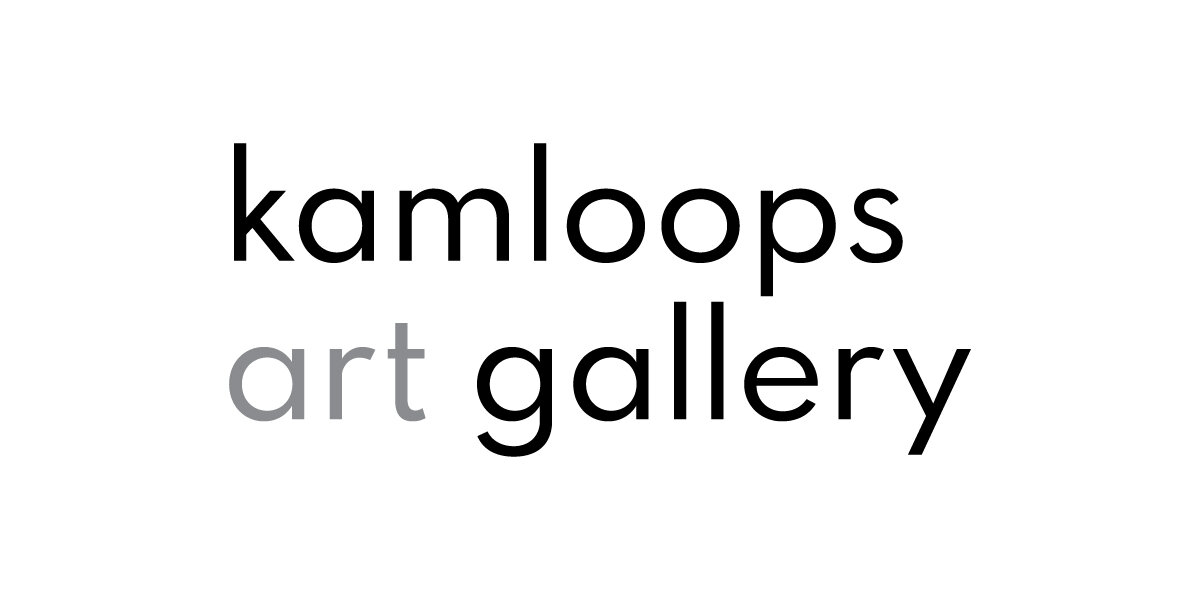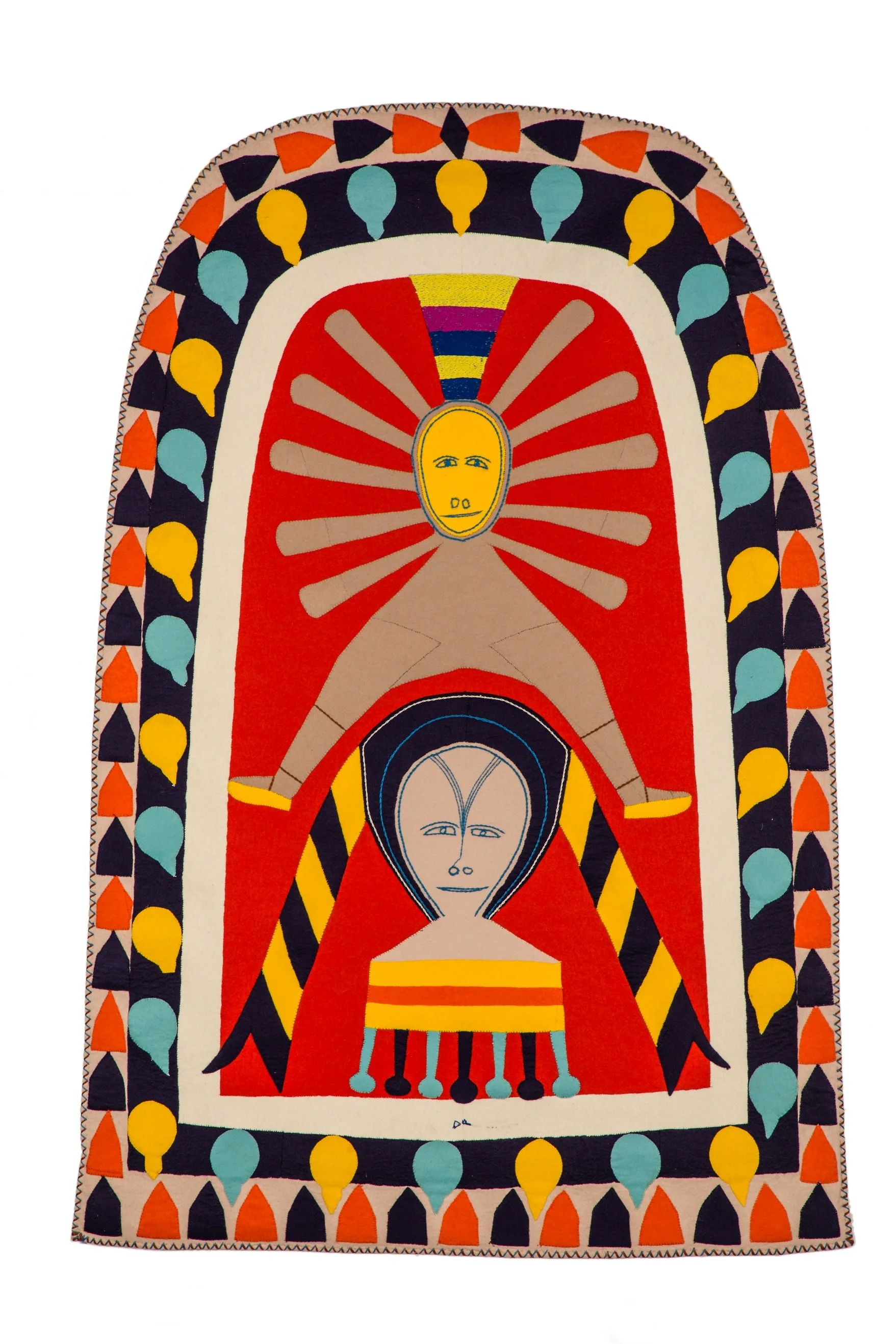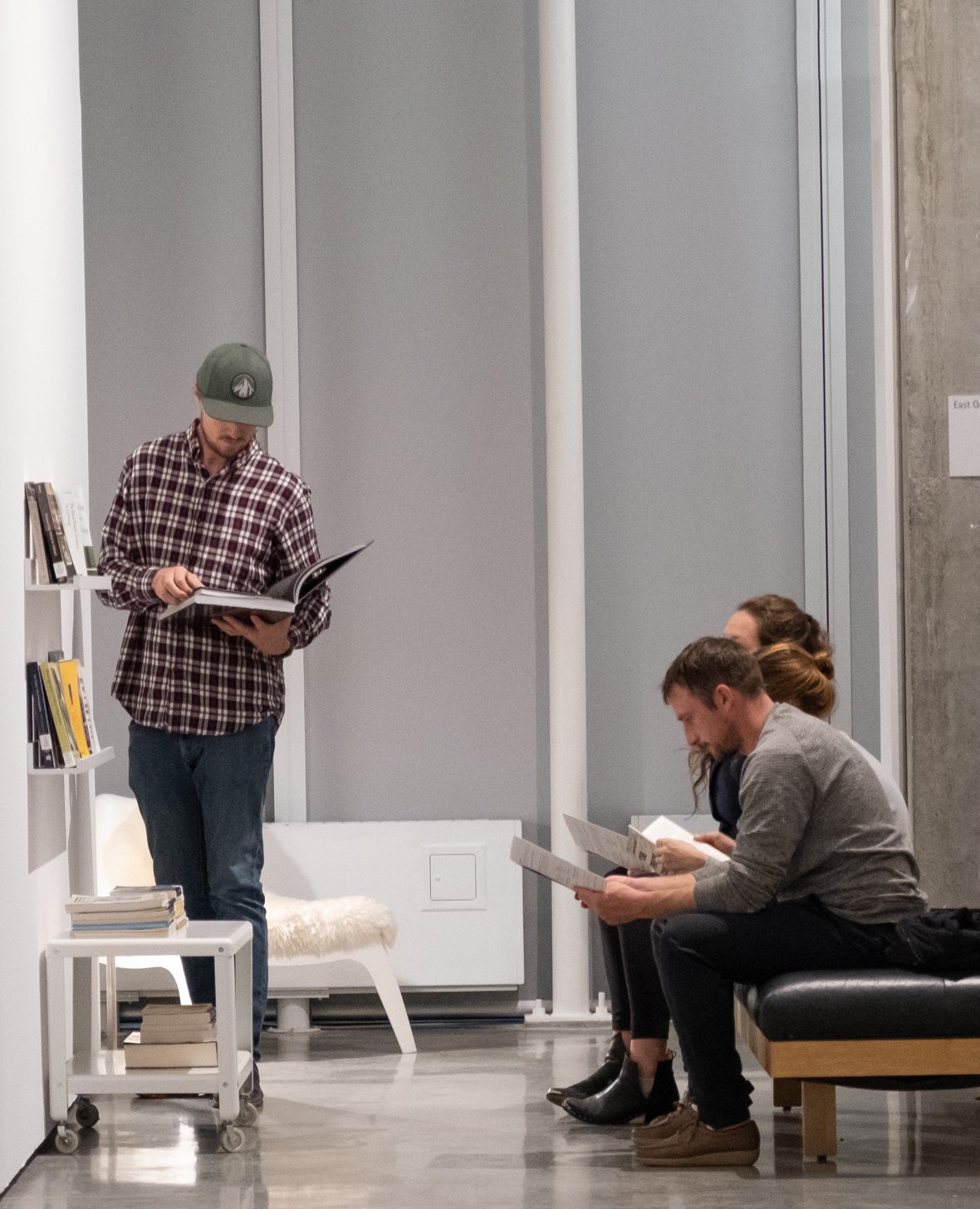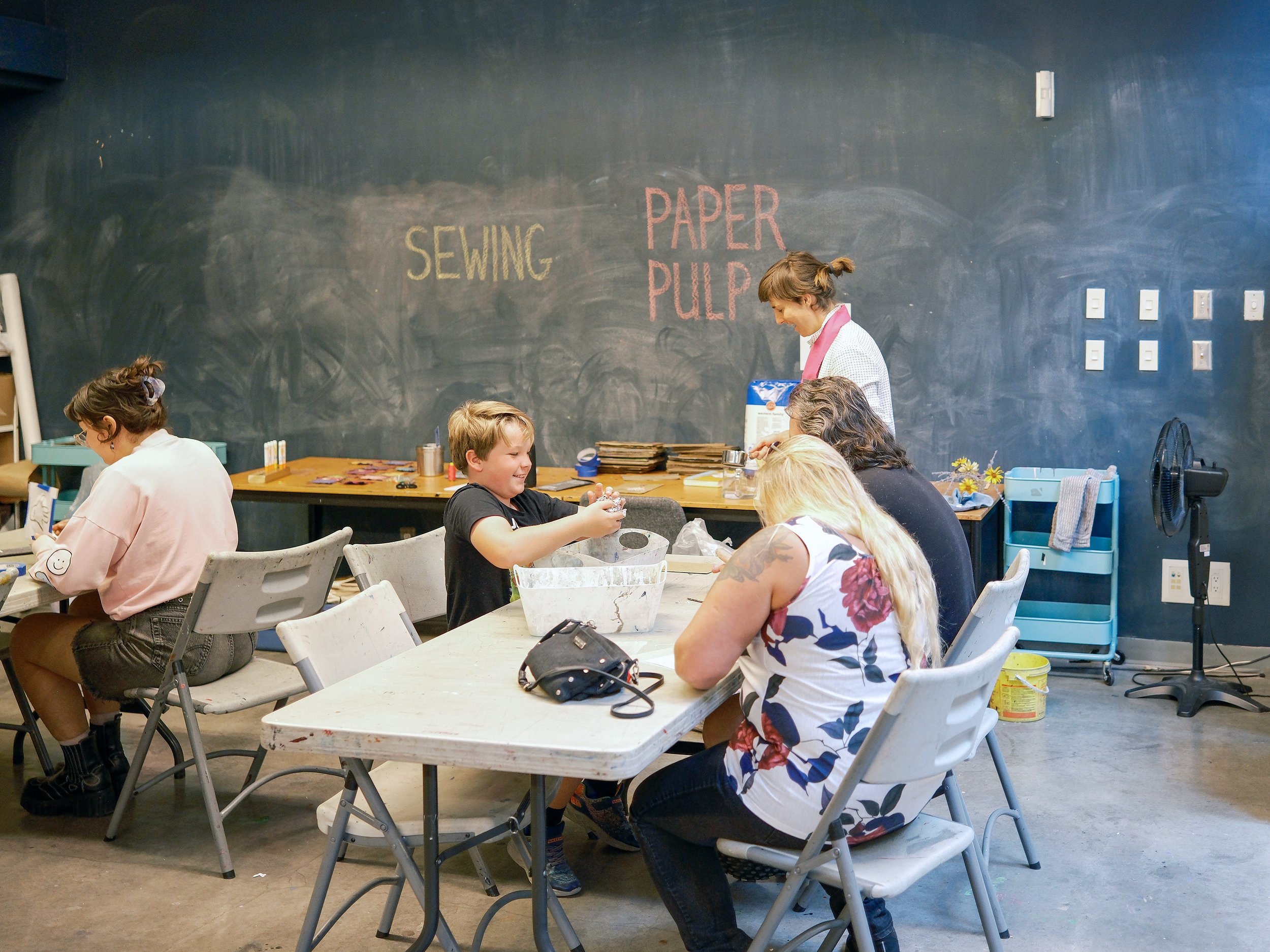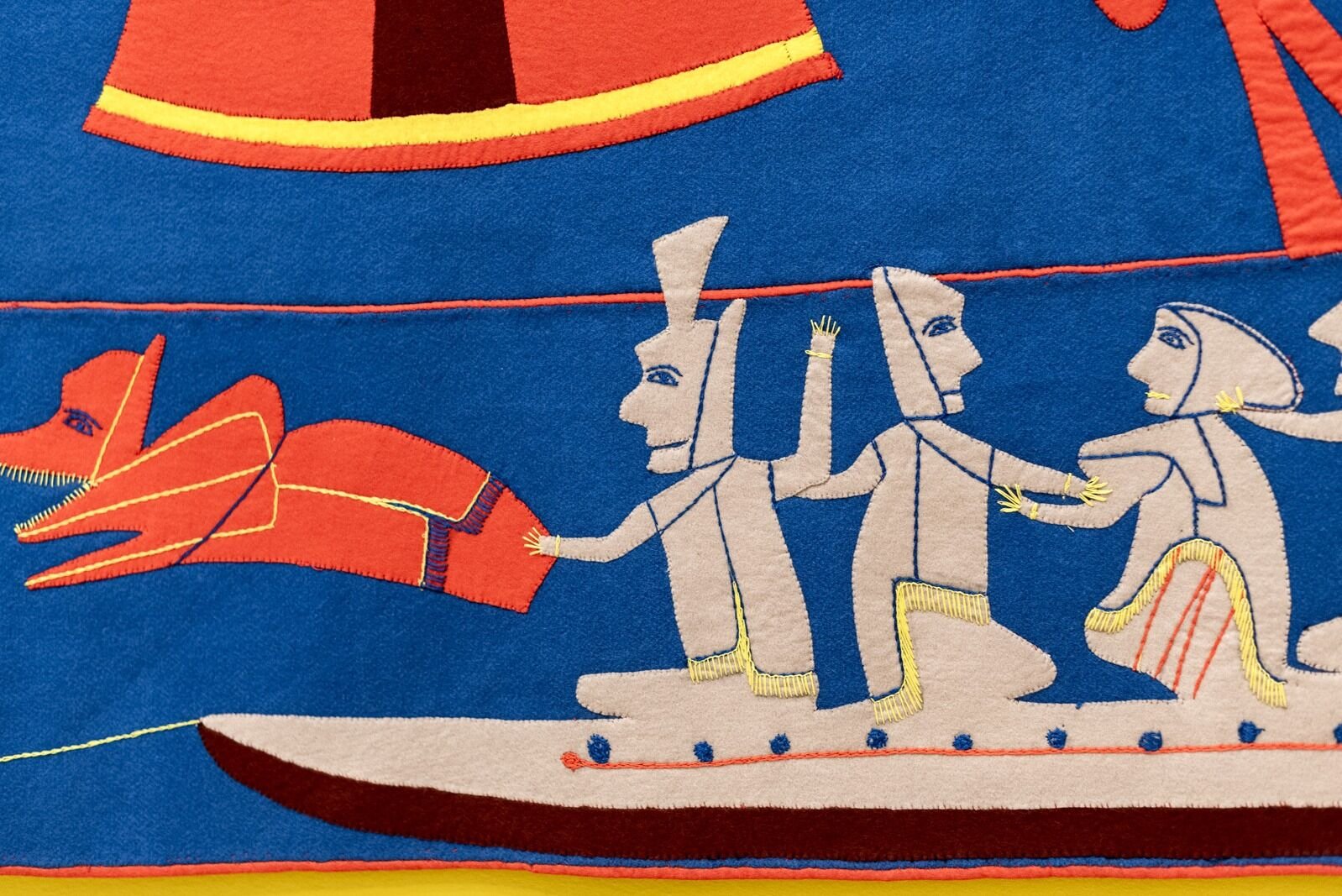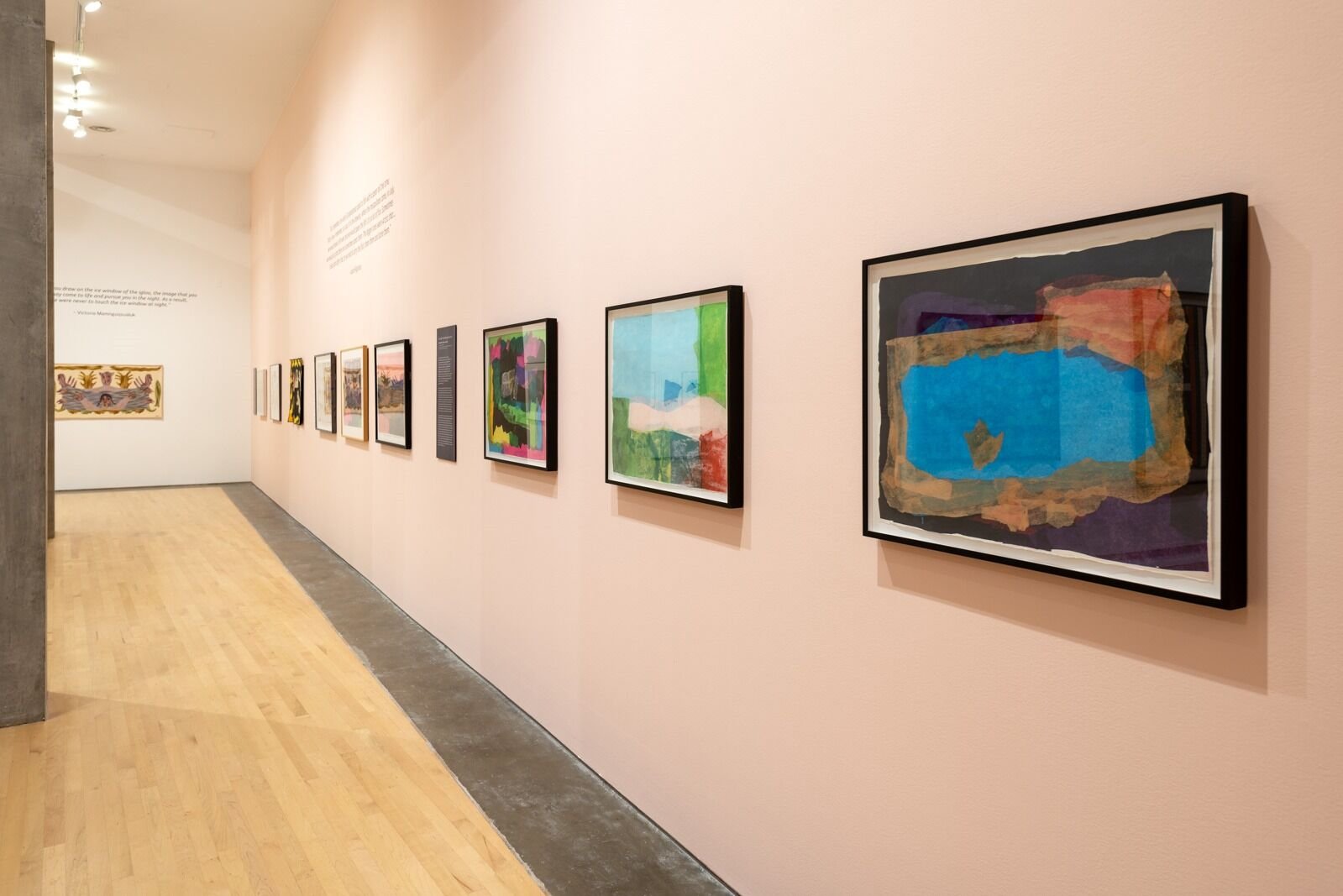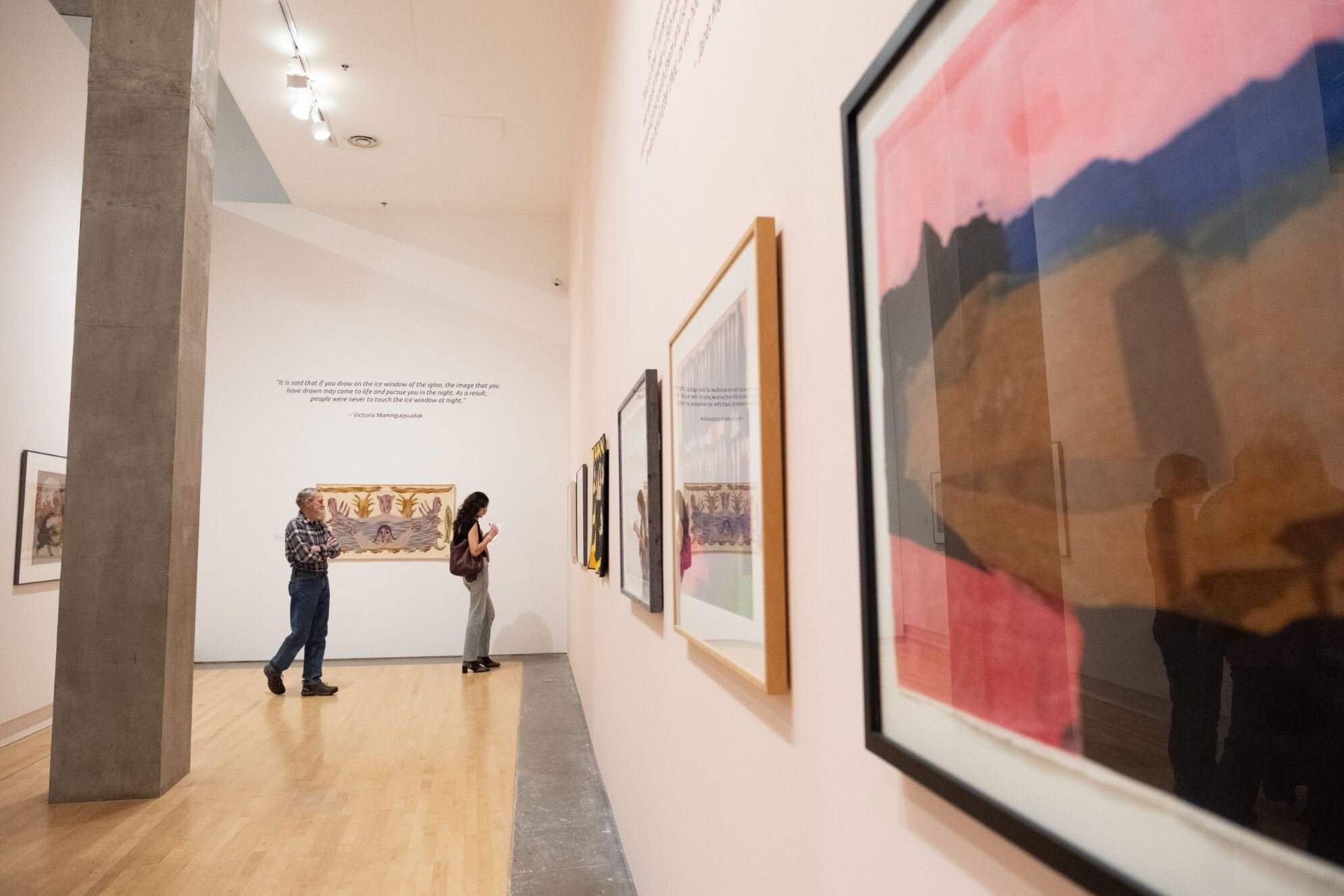ᑕᑯᒃᓴᐅᔪᒻᒪᕆᒃ DOUBLE VISION
Jessie Oonark, Janet Kigusiuq, and Victoria Mamnguqsualuk
Central Gallery
January 20 to April 6, 2024
Curated by Candice Hopkins
Double Vision is centred on the practice of Jessie Oonark (1906–1985) and two of her daughters, Janet Kigusiuq and Victoria Mamnguqsualuk. Although Oonark only began drawing and working with wool at the age of 59 once she moved to Qamani’tuaq (meaning “Where the River Widens,” also known as Baker Lake in Nunavut), she is arguably one the most influential Inuit textile makers. Eight of her children became artists: Victoria Mamnguqsualuk, Josiah Nuilaalik, Nancy Pukingrnak Aupaluktuq, Miriam Qiyuk, Peggy Qablunaaq Aittauq, Mary Yuusipik Singaqti, William Noah, and Janet Kigusiuq. Together they formed the cornerstone of artistic production in the community of Qamani’tuaq.
When new economies were being generated in Nunavut to replace the fur trade and local Indigenous economies, foremost among them was handicrafts. In the 1940s and 1950s, the federal government invested as much into the production of handicrafts as they did into stone carving and later, printmaking. Handicrafts were firmly the domain of women who immediately saw the potential of nivinngajuliaat (wall hangings) to tell stories.
Regional styles were quickly developed. In the community of Arviat, textiles were embellished with heavy appliqué through beading (a translation of beadwork practices already in use in clothing) and the creation of three-dimensional figures; Pangnirtung became known for large-scale woven pictorial tapestries; and Qamani’tuaq—where Oonark lived and worked—for their bright, stitched duffel works often featuring cut-out images centring on the dynamics and interrelationships between people, animals, and the spiritual world. In Qamani’tuaq, women mentored one another and produced unique aesthetic and conceptual lineages. This is particularly the case with Oonark's family, creating what is a distinctly matriarchal practice.
ᑕᑯᔭᒐᖃᕐᕕᖕᒥᐅᑕᒥᒃ ᓇᓗᓇᐃᔭᐅᑎᒋᔭᐅᔪᖅ:
ᑕᑯᒃᓴᐅᔪᒻᒪᕆᒃ ᐱᔾᔪᑎᖃᓗᐊᖅᐳᖅ ᔭᓯ ᐆᓇᕐᒥᒃ (1906-1985) ᐱᓕᕆᖃᑦᑕᓚᐅᖅᑕᖏᓐᓂᒃ ᐊᒻᒪᓗ ᒪᕐᕉᒃ ᐸᓂᖏᓐᓂᒃ, ᔭᓂᑦ ᑭᒍᓯᐅᖅ ᐊᒻᒪᓗ ᕕᒃᑐᕆᔭ ᒪᒻᖑᖅᓱᐊᓗᒃ. ᑕᐃᒪᓕ ᐆᓇᖅ ᑎᑎᕋᐅᔭᖃᑦᑕᓕᓚᐅᖅᓯᒪᔪᖅ ᐊᒻᒪᓗ ᓴᓇᖃᑦᑕᓕᖅᖢᓂ ᓄᕕᖅᓵᒃᓴᓂᒃ ᐅᑭᐅᖃᓕᖅᑎᓪᓗᒍ 59−ᓂᒃ ᓅᓯᒪᓕᖅᑎᓪᓗᒍᖅ ᖃᒪᓂᑦᑐᐊᕐᒧᑦ (ᑐᑭᖃᖅᑐᖅ “ᑰᒃ ᓯᓕᒃᓯᕙᓪᓕᐊᓕᖅᑐᖅ”)ᑕᐃᒪᓕ ᐊᐃᕙᔾᔪᑕᐅᔪᓐᓇᑦᑎᐊᖅᑐᖅ ᐊᒻᒪᓗ ᖃᐅᔨᒪᔭᐅᓂᖅᐹᖑᓪᓗᓂ ᐃᓅᓪᓗᓂ ᖃᓪᓗᓈᖅᑕᓂᒃ ᓴᓇᒃᑲᐅᓂᖓᓂᒃ. 8−ᖑᔪᑦ ᕿᑐᙵᖏᑦ ᓴᓇᐅᒐᓕᐅᖅᑎᒻᒪᕆᐅᖕᒥᔪᑦ: ᕕᒃᑐᕆᔭ ᒪᒻᖑᖅᓱᐊᓗᒃ, ᔪᓯᐊ ᓄᐃᓛᓕᒃ, ᓈᓐᓯ ᐳᑭᖕᓇᒃ ᐊᐅᐸᓗᒃᑐᖅ, ᒥᕆᐊᒻ ᕿᔪᒃ, ᐱᒋ ᖃᑉᓗᓈᖅ ᐊᐃᑦᑕᐅᖅ, ᒥᐊᓕ ᔫᓯᐱᒃ ᓯᖓᖅᑎ, ᕕᓕᐊᒻ ᓄᐊ, ᐊᒻᒪᓗ ᔮᓂᑦ ᑭᒍᓯᐅᖅ. ᑖᒃᑯᐊ ᑕᐅᑐᒃᑕᐅᓂᖃᑦᑎᐊᖅᐳᑦ ᓴᓇᐅᒐᓕᐅᖅᑎᐅᓂᖏᓐᓂᒃ ᖃᒪᓂᑦᑐᐊᑉ ᓄᓇᓕᐊᓂᒃ.
ᑕᐃᒪᓕ ᑮᓇᐅᔭᓕᐅᕈᑎᒃᓴᑦ ᓴᖅᑭᑕᐅᓕᖅᑎᓪᓗᒋᑦ ᓄᓇᕗᒻᒥᑦ ᐃᓇᒋᖅᓯᔾᔪᑕᐅᓪᓗᓂ ᐊᒥᕐᓂᒃ ᓂᐅᕐᕈᑎᖃᖃᑦᑕᕐᓂᕐᒥᒃ ᐊᒻᒪᓗ ᑕᒪᒃᑯᐊ ᓄᓇᖃᖅᑳᖅᓯᒪᔪᑦ ᑮᓇᐅᔭᓕᐅᕈᑎᒋᕙᒃᑕᖏᓐᓂᒃ, ᐱᓗᐊᖅᑐᒥᒃ ᓴᓇᐅᒐᓕᐊᖑᕙᒃᑐᓂᒃ. ᐅᑭᐅᒃ 1940 ᐊᒻᒪᓗ 1950 ᐊᑐᖅᑎᓪᓗᒋᑦ, ᒐᕙᒪᑐᖃᒃᑯᑦ ᑮᓇᐅᔭᓕᐅᕈᑎᖃᕋᓱᒻᒪᕆᓚᐅᖅᓯᒪᔪᑦ ᓴᓇᐅᒐᓕᐊᖑᕙᒃᑐᓂᒃ ᓴᓇᖑᐊᖅᑕᐅᕙᒃᑐᓂᒡᓗ ᐊᒻᒪᓗ ᑭᖑᓂᐊᒍᑦ ᑎᑎᕋᐅᔭᒐᕐᓂᒃ. ᒥᖅᓱᒐᐃᑦ ᐊᕐᓇᓄᑦ ᓴᓇᔭᐅᕙᒃᑐᑦ ᓂᕕᙵᑕᓂᒃ ᐅᓂᒃᑳᐅᓯᐅᕙᒃᑐᓂᒃ ᓴᓇᕙᒃᖢᑎᒃ.
ᓴᓇᔭᐅᕙᒃᑐᑦ ᓇᓗᓇᕈᓐᓃᓚᐅᖅᓯᒪᕗᑦ ᓇᑭᒃ ᓄᓇᓂᒃ ᓴᓇᔭᐅᕙᖕᓂᖏᓐᓂᒃ. ᐊᕐᕕᐊᓂ, ᖃᓪᓗᓈᖅᑕᓂᒃ ᓴᓇᖃᑦᑕᕐᓂᖅᓴᐅᔪᑦ ᓱᖓᐅᔭᓂᒃ ᐊᑐᖅᖢᑎᒃ ᓴᓇᖃᑦᑕᕐᓂᖏᓐᓂᒃ (ᐊᓐᓂᕌᑦ ᓱᖓᐅᔭᓕᖅᓱᑕᐅᓯᒪᓪᓗᑎᒃ ᓴᓇᕙᒃᑐᑦ) ᐊᒻᒪᓗ ᓴᓇᕙᒃᑭᓪᓗᑎᒃ ᐱᖓᓱᓕᖓᔪᓂᒃ ᑕᑯᒃᓴᐅᔪᓂᒃ ᐃᓄᖑᐊᓂᒃ; ᐸᖕᓂᖅᑑᒥᐅᓪᓕ ᖃᐅᔨᒪᔭᐅᔪᑦ ᓴᓇᕙᖕᓂᖏᓐᓂᒃ ᓄᕕᖅᓴᖅᓯᒪᔪᓂᒃ ᐊᖏᔪᓂᒃ ᓂᕕᙵᔪᓕᐊᖅᓯᒪᔪᓂᒃ: ᐊᒻᒪᓗ ᖃᒪᓂᑦᑐᐊᕐᒥᐅᑦ ᓴᓇᕙᒃᖢᑎᒃ −−− ᐆᓇᐅᑉ ᓄᓇᒋᓚᐅᖅᓯᒪᔭᖓᓂ ᐊᒻᒪᓗ ᓴᓇᕙᒃᖢᓂ−−− ᑕᒪᒃᑯᓂᖓ ᑕᖅᓴᖃᑦᑎᐊᖅᑐᓂᒃ, ᑕᕗᓪᓂᒃ ᓴᓇᓯᒪᕙᒃᖢᑎᒃ ᑭᔾᔭᖅᑐᖅᓯᒪᔪᓂᒃ ᐃᓄᖑᐊᓂᒃ, ᓂᕐᔪᑎᖑᐊᓂᒃ, ᐊᒻᒪᓗ ᐅᒃᐱᕐᓂᕐᒧᑦ ᐱᓯᒪᔪᓂᒃ. ᖃᒪᓂᑦᑐᐊᕐᒥᑦ, ᐊᕐᓇᐃᑦ ᐃᖕᒥᖕᓄᑦ ᐃᓕᓐᓂᐊᖅᑎᑦᑎᖃᑦᑕᖅᑐᑦ ᓴᓇᔭᒥᓂᒃ ᐊᒻᒪᓗ ᐊᔪᕈᓐᓃᕈᑎᒋᕙᒃᖢᓂᒋᑦ ᓴᓇᓂᐊᖅᑕᒥᓂᒃ. ᑕᐃᒪᓐᓇ ᐆᓇᖅᐃᓕᓐᓂᐊᖅᑎᑦᑎᖃᑦᑕᓚᐅᕐᒪᑦ ᕿᑐᙵᒥᓄᒃ, ᐱᐅᔪᓂᒃ ᓴᓇᖃᑦᑕᕐᓂᕐᒥᒃ.
Double vision est centrée sur la pratique artistique de Jessie Oonark (1906–1985) et de deux de ses filles, Janet Kigusiuq et Victoria Mamnguqsualuk. Bien qu’elle ait seulement commencé à dessiner et à travailler la laine à l’âge de 59 ans, après son installation à Qamani’tuaq (littéralement « là où la rivière s’élargit », aussi connue sous le nom de Baker Lake), Oornak fait incontestablement partie des créatrices textiles inuites qui ont eu une influence majeure. Huit de ses enfants sont devenus artistes : Victoria Mamnguqsualuk, Josiah Nuilaalik, Nancy Pukingrnak Aupaluktuq, Miriam Qiyuk, Peggy Qablunaaq Aittauq, Mary Yuusipik Singaqti, William Noah, et Janet Kigusiuq. Ensemble, ils ont été la pierre angulaire de la production artistique de la communauté de Qamani’tuaq.
Parmi les nouvelles économies créées au Nunavut pour remplacer le commerce de la fourrure et les économies autochtones locales, les principales reposaient sur l’artisanat. Dans les années 1940 et 1950, le gouvernement fédéral a autant investi dans la production d’objets artisanaux que dans la sculpture sur pierre et que, plus tard, dans la gravure. L’artisanat était résolument le domaine des femmes, qui ont immédiatement compris le potentiel narratif des nivinngajuliaat (pièces murales).
Rapidement, des styles régionaux se sont développés. Ainsi, à Arviat, les textiles étaient ornés de lourds appliqués en perlage (transposition des broderies perlées déjà utilisées pour la confection de vêtements) et de personnages en trois dimensions; la ville de Pangnirtung est devenue célèbre pour ses immenses tapisseries illustrées; et Qamani’tuaq — là où Oonark a vécu et travaillé — était réputée pour ses éclatantes pièces textiles en laine feutrée, souvent cousues d’images découpées illustrant principalement la dynamique et les interactions entre les êtres humains, les animaux et le monde spirituel. À Qamani’tuaq, les femmes étaient des mentores les unes pour les autres, et elles ont créé des lignées esthétiques et conceptuelles uniques. C’est particulièrement le cas dans la famille de Oonark, qui a enfanté une pratique clairement matriarcale.
Developed in partnership with the Toronto Biennial of Art and circulated by the Textile Museum of Canada with the support of the Museums Assistance Program of the Department of Canadian Heritage.
Project Partner: Toronto Biennial of Art
Project Advisor: Krista Ulujuk Zawadski
A D D I T I O N A L R E S O U R C E S
Jessie Oonark
(Qamani’tuaq [Baker Lake],
1906–1985)
Untitled, c. 1972–1973
wool felt on wool duffle
129.5 x 85 cm
Government of Nunavut
Fine Art Collection
On long-term loan to the
Winnipeg Art Gallery, 2.76.2
